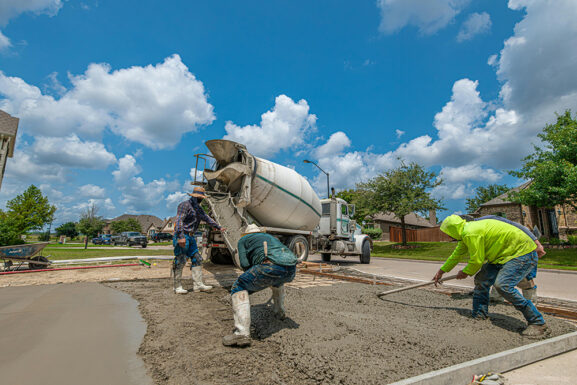Time Tracking That Actually Helps You Make More Money
Here’s the brutal truth: Most contractors have no idea where their time actually goes or how much money they’re losing to poor time management. You might think you spent 6 hours on the Johnson kitchen remodel, but did you account for the 45 minutes spent driving to get the forgotten supply run? What about the 20 minutes explaining the delay to Mrs. Johnson, or the hour you spent fixing that “quick problem” that turned into a major headache?
If you’re like most contractors, you’re probably underestimating job times by 20-30%, which means you’re essentially working for free on every project. But here’s the good news: proper time tracking can be the difference between struggling to pay bills and building a profitable, sustainable contracting business.
The Real Cost of Poor Time Tracking
Before we dive into solutions, let’s talk about what poor time tracking is actually costing you:
Underpricing Future Jobs: When you don’t know how long tasks actually take, you bid based on guesswork. That “4-hour bathroom tile job” that actually took 7 hours just cost you $150+ in free labor.
Missed Profit Opportunities: You can’t optimize what you can’t measure. Without accurate time data, you don’t know which services are most profitable or which tasks are eating into your margins.
Cash Flow Problems: Inaccurate time estimates lead to project delays, which cascade into scheduling problems and unhappy clients. Unhappy clients pay slowly (or not at all).
Burnout and Overwork: When you’re constantly underestimating job times, you end up working longer hours just to break even. This isn’t sustainable long-term.
According to Clockify’s 2024 Time Tracking Report, businesses that track time effectively see an average 12% increase in profitability. For contractors, this can translate to thousands of dollars annually.
Why Traditional Time Tracking Fails Contractors
Most time tracking advice comes from the office world and doesn’t account for the realities of contractor work:
You’re constantly moving between job sites – Traditional punch clocks don’t work when your office is your truck.
Interruptions are constant – Client questions, material runs, equipment issues. Office-based time tracking assumes uninterrupted work blocks.
Project complexity varies wildly – A “simple” drywall repair can turn into a full electrical rewire when you open the walls.
Multiple revenue streams – You might do service calls, larger projects, and maintenance contracts all in the same day.
This is why contractors need a different approach to time tracking—one that actually fits how you work.
The Contractor’s Guide to Profitable Time Tracking
Track the Right Things
Don’t just track “work time.” Break it down into categories that actually help you price future jobs:
Direct Labor Time: Time spent physically working on the project Travel Time: Driving to job sites, supply runs, disposal trips
Administrative Time: Estimates, invoicing, client communication Problem-Solving Time: Dealing with unexpected issues, code problems Material Coordination: Ordering, receiving, organizing supplies
Use Mobile-First Tools
Since you’re rarely at a desk, your time tracking needs to work on your phone. Here are the top options:
TSheets by QuickBooks – Built specifically for field workers with GPS tracking and job costing integration. The GPS feature automatically tracks when you arrive and leave job sites.
Clockwise – Simple interface with offline capability. Great for contractors who work in areas with poor cell service.
Toggl Track – Excellent for tracking different types of work with detailed project breakdowns. The free version works well for solo contractors.
RescueTime – Automatic time tracking that runs in the background. Helpful for understanding how much time you spend on administrative tasks.
Leverage GPS and Automation
Manual time tracking is prone to errors and forgotten entries. Modern apps can automatically:
- Start timers when you arrive at job sites
- Track mileage for tax deductions
- Log travel time between locations
- Send reminders to clock in/out
MileIQ automatically tracks your driving and categorizes trips as business or personal. Since the IRS allows 65.5¢ per business mile in 2023, this can add up to significant tax savings.
The Time Tracking System That Actually Works
Here’s a simple system that takes less than 2 minutes per day but provides massive insights:
Morning Setup (30 seconds)
Start your day by reviewing scheduled jobs and starting a timer for your first activity (even if it’s driving to the job site).
During the Day (1 minute per transition)
When you switch activities, make a quick note:
- What you just finished
- What you’re starting
- Any issues or delays encountered
Use voice notes if typing is inconvenient. Apps like Otter.ai can transcribe voice notes automatically.
End of Day Review (1 minute)
Stop all timers and add any missing entries. Don’t stress about perfect accuracy—consistency is more important than perfection.
Weekly Analysis (15 minutes)
Every Friday, review the week’s data:
- Which jobs took longer than estimated?
- What unexpected time drains occurred?
- Which activities were most profitable per hour?
How to Use Time Data to Make More Money
Collecting data is pointless unless you act on it. Here’s how to turn time tracking into profit:
Improve Your Estimates
Track actual vs. estimated time for each type of work. After 3-4 months, you’ll have solid data to improve future bids.
Example: If your bathroom remodels consistently take 25% longer than estimated, start adding that buffer to new quotes.
Identify Your Most Profitable Work
Calculate your hourly rate for different services:
- Service calls: Often $75-150/hour
- Large projects: Might be $45-65/hour
- Warranty work: Could be break-even or loss
Focus marketing efforts on your highest-value work.
Optimize Your Schedule
Time tracking reveals patterns:
- Which time of day are you most productive?
- How much time does travel really take?
- What administrative tasks could be batched?
Pro tip: Group similar tasks and locations to minimize travel time. If you can save 1 hour of driving per day, that’s 250+ billable hours annually.
Price Changes More Accurately
When material prices change or you add new services, accurate time data helps you adjust pricing appropriately. According to Construction Dive, material costs have increased 20%+ in recent years, but many contractors haven’t adjusted labor pricing accordingly.
Advanced Time Tracking Strategies
Once you’ve mastered basic time tracking, try these advanced techniques:
Activity-Based Costing
Instead of just tracking “plumbing work,” break it down:
- Rough plumbing installation
- Fixture installation
- Troubleshooting/repairs
- Code compliance work
This granular data helps you identify which specific activities are most profitable.
Client Profitability Analysis
Track time by client to identify:
- Which clients respect your time
- Who creates scope creep
- Which relationships are actually profitable
Red flag clients who consistently take 20%+ more time than estimated might need different pricing or boundaries.
Seasonal Pattern Recognition
Your time allocation probably changes seasonally:
- Winter: More indoor work, equipment maintenance
- Summer: Longer days, more outdoor projects
- Fall: Rush to complete before weather changes
Understanding these patterns helps with:
- Annual planning
- Cash flow management
- Equipment needs
- Staffing decisions
Common Time Tracking Mistakes to Avoid
Perfectionism: Trying to track every minute kills adoption. Aim for “good enough” data consistently rather than perfect data occasionally.
Too Many Categories: Start simple with 3-5 activity types. You can always add complexity later.
Forgetting Non-Billable Time: Administrative work, estimates, and equipment maintenance are real costs that should be factored into your rates.
Not Tracking Travel: Travel time is often 15-25% of your day. Don’t give it away for free.
Analysis Paralysis: Data without action is worthless. Set aside time weekly to review and adjust based on what you learn.
Integration with Business Systems
Your time tracking should connect with your other business tools:
Accounting Software: QuickBooks, FreshBooks, and Xero all integrate with major time tracking apps for seamless invoicing.
Project Management: Tools like Buildertrend and CoConstruct can import time data for project costing.
Estimating Software: Use historical time data to improve estimates in tools like PlanSwift or STACK.
The ROI of Time Tracking
Let’s do the math on a typical contractor scenario:
Before Time Tracking:
- Average job estimate accuracy: 70%
- Time spent on non-billable activities: 25%
- Hourly rate awareness: Poor
- Annual revenue: $150,000
- Actual profit margin: 8%
After 6 Months of Time Tracking:
- Average job estimate accuracy: 90%
- Time spent on non-billable activities: 18%
- Hourly rate by service: Well understood
- Annual revenue: $165,000 (better pricing)
- Actual profit margin: 15%
Result: $22,500 more annual profit from the same amount of work.
Even if you only see half these improvements, the time investment pays for itself many times over.
Getting Started This Week
Day 1: Choose a time tracking app and set it up on your phone Day 2: Start with basic categories (travel, direct work, admin) Day 3-7: Focus on consistency over perfection Week 2: Add GPS tracking and mileage logging Week 3: Start analyzing patterns and identifying improvements Month 2: Begin adjusting estimates based on actual data
Your Time Tracking Action Plan
- Download a time tracking app from the recommendations above
- Set up basic job categories that match your work types
- Track for 2 weeks without changing anything—just collect data
- Analyze the results to identify your biggest time drains
- Adjust one thing based on what you learned
- Repeat the cycle monthly
Remember: Time tracking isn’t about micromanaging yourself—it’s about understanding your business well enough to make it more profitable.
The contractors who track their time effectively aren’t working harder than everyone else—they’re working smarter. They know exactly which jobs make money, which clients respect their time, and how to price their services for maximum profitability.
Ready to take your contractor business to the next level? Download our free Time Tracking Worksheet to get started with profitable time management.
[Download Free Time Tracking Worksheet →]
Disclosure: Some links in this article are affiliate partnerships that help support ContractorWorldLand at no extra cost to you. We only recommend tools and services we believe provide genuine value to contractors.


